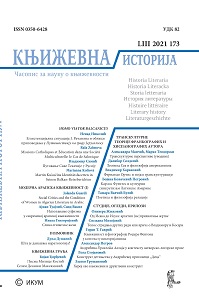Путовање Саве Текелије у Русију: скица Источне Европе у белешкама просвећеног племића
Sava Tekelija’s Journey to Russia: A Sketch of Eastern Europe in the Notes of an Enlightenment Noble
Author(s): Vladimir SimićSubject(s): Serbian Literature
Published by: Институт за књижевност и уметност
Keywords: Sava Tekelija;travel journal;travelogue;Russia;Eastern Europe;Enlightenment;
Summary/Abstract: In 1787, Sava Tekelija, a Serbian Noble from Arad, set off on a journey to Russia with the idea of starting a career that he was prevented from having in Hungary due to religious reasons. This was a journey of discovery for him, as he saw Eastern Europe for the first time, a region with which he shared the Orthodox faith, but one whose cultural patterns and political customs were foreign to him. As he would discover, Eastern Europe was close to him because of the common Orthodox faith, but concerning the cultural patterns and political customs, it was far and foreign. Along the way, he would draw interesting sites and jot down his observations in a notebook, and these, years later, found their place in his memoirs. He penned interesting descriptions of the Russian landscape and geographical features, along with brief ethnographic observations and analyses. He was interested in the life of the lower classes in Eastern Europe, which he compared to the life of Serbian peasants in Hungary.Much like travel writers from the West, Tekelija noticed the difference between the civilized world to which he belonged and the people from the European frontier, which lay beyond it. For example, he found out that the issue of sexuality in Russia was deeply intertwined with the feudal social relations, which he illustrated with numerous anecdotes and detailed descriptions of events he had witnessed. As in other cases, he explained these and other similar anomalies by the severe misery in which the Russian people lived, which led them to a state of moral degradation. Feudal slavery was another phenomenon he came into contact with on his travels, one which other travel writers also wrote about as a key feature of Eastern Europe. The disenfranchised rural population was practically in a state of bondage, which for Tekelija served as confirmation that the region truly belonged to the Orient. Seeing as Eastern Europe, in terms of religion, mostly belonged to the Orthodox Church, unlike the rest of the continent, in the minds of Serbs in Hungary, Russia was synonymous with the Orthodox faith. This is why Tekelija used the opportunity to embark on a pilgrimage of sorts, and visit holy places as well as see famous Christian relics first hand. In several places he gives his view of popular Christian beliefs and customs, singling out the Kyiv-Pechersk Lavra as the most important place in the Orthodox topography of the region. At the same time, Tekelija was interested in art and culture, extensions of nobility characteristic of that social class, and so as a connoisseur and collector, he often visited private collections. Moving in the circles of the Russian nobility, he was able to get acquainted with the cultural life of the Russian elite and keep abreast of the various forms of art they engaged in. Even though his aristocratic status made him consider as his own only that which belonged to the elite, new ideas that had started permeating the continent ever more forcefully, made him ponder the politics and philosophy of various social issues he encountered during his travels. New landscapes and new people would outline an image of Eastern Europe that would help shape Tekelija’s views, which would come to the fore in the latter part of his life when he would become an important political actor and a leader of the early 19th century Serb emancipation movement.
Journal: Књижевна историја
- Issue Year: 53/2021
- Issue No: 173
- Page Range: 41-65
- Page Count: 25
- Language: Serbian

